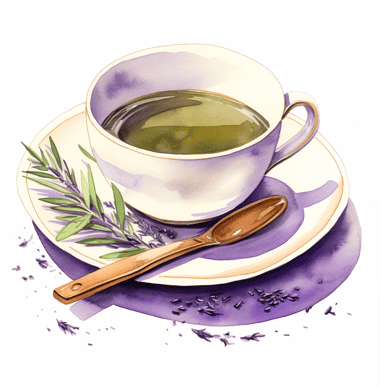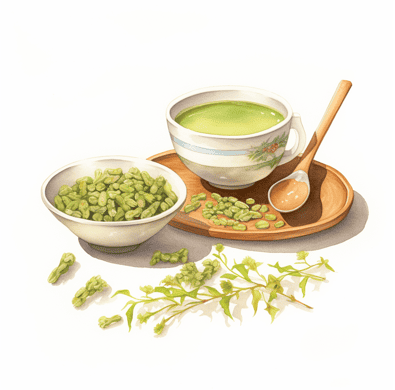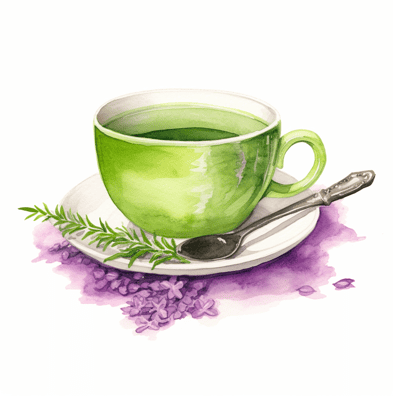
Don’t want to read the whole post?
Wondering why your green tea sometimes looks brown? It could be the water you’re using, the way you’re brewing, or even how you’re storing your tea.
ABOUT ME
Be beauty. Be plant-based!
As a former Registered Nurse and avid plant-muncher, I’m in love with how simple plant-based foods make it easy to be beautiful.

You’ll also love:
Green Tea Benefits For Skincare: Your Personal Beauty Brew
How Long Does Black Tea Last? Keeping It Fresh
Bye-Bye Blemishes: Is Peppermint Tea Good for Acne?
Hello, beautiful! Are you wondering “why is my green tea brown?”. While this may seem like a minor detail in the grand journey towards a plant-based, glowing life, it’s these details that make the journey so fascinating. Let’s delve into this intriguing question and shed some light on the world of tea.
The Ideal Colour for Green Tea
Green tea, as its name tantalisingly hints, graces our cups with a delightful greenish or yellow colour.
However, there’s a world of diversity in tea, and not all greens are made equal. While Japanese green tea might display a particular hue, the Chinese green tea might surprise you with a slightly different shade. Ever tried matcha tea? This green tea powder, when whipped to perfection, boasts a vibrant green, transporting you instantly to a serene Japanese tea ceremony.
But if you’re here, chances are your tea isn’t reflecting that fresh green hue. So, let’s uncover the factors that may be turning your green tea brown.
The Vibrant Spectrum of Green Tea Colours
Green tea has many varieties, and with that, many shades of green.
Japanese Green Teas
Venturing into the world of Japanese green tea, we come across distinct types that each tell a colour story of their own. The steaming process pivotal to some Japanese teas can give a fresh spin on the classic green shade we anticipate.
Genmaicha Tea
A delightful blend of green tea leaves and roasted brown rice, genmaicha dances in hues of yellow mingled with the brown of roasted rice. This brownish shade, coupled with the tea’s ability to tame the bitter taste, makes it a unique sip.

Hojicha
Diverging from the quintessential bright green colour of green tea, hojicha presents itself in a roasted brown shade, thanks to its roasting process. This tea embraces the brownish colour, offering a toasted flavour without the bitter bite.

Matcha Tea
Stepping into the limelight, matcha powder, especially high-quality matcha, gleams in a vibrant green colour. But tread cautiously; lower-quality matcha might sport a less brilliant, darker colour.
Sencha
A frontrunner in the green tea realm, sencha shines in hues ranging from golden yellow to a bright green colour. Its steaming method captures the essence and vibrancy of the green tea leaves. But a note of caution: brewing it for too long might tilt it towards a brownish tinge accompanied by a bitter aftertaste.

Also: Black and Oolong Tea
While we have a soft spot for green tea, it’s vital to acknowledge its robust cousins. Black tea and oolong tea, thanks to their unique oxidation processes, tend to flaunt a darker colour, reminiscent of autumn leaves swirling in a cup. The roasting process that some teas, like oolong, undergo can bestow upon them a deeper, brown colour, showcasing the diversity in the world of teas.
So, as we navigate the diverse universe of tea, from the different colours of green tea to its broader family, it’s evident that each brew carries with it tales of traditions, processes, and nature’s palette. Here’s to celebrating each shade and story with every sip, beautiful!
Factors Affecting the Colour of Your Brew
Water’s Role
Crystal clear as it may seem, water is the unsung hero behind the shade of your tea. Different sources, from tap water to filtered water, each bring their own hue influence. Beware of hard water and its sneaky minerals; they’re known for pushing your brew towards the darker side.

Temperature Matters
Lower temperatures are often best for certain types of tea, ensuring a lighter, authentic shade.
While pouring boiling hot water over your precious tea leaf might seem right, it can draw out more tannins – leading to that unexpected brownish hue. On the flip side, high temperatures can be too harsh, especially on the quality of the leaves.
And room temperature? It’s often overlooked, but it can play its part too.
Steeping Time
Recall the last time you made tea. Did you let it sit for a tad too long? Over-steeping is a common culprit for a darker brew.
Tea Choices
Whether you’re grabbing a convenient tea bag or delicately placing loose green tea leaves, each choice comes with its colour story. And remember, the type of tea and quality of the leaves play starring roles in your cup’s final look.
Identifying Expired Green Tea
There’s nothing quite like a fresh cup of green tea, with its invigorating aroma and taste. But what if that lively green or yellow colour starts to fade into a light brown or brownish colour? It might be a hint that your tea has seen better days. Age and exposure to air can make your green tea leaves lose their vibrancy.
It’s not just about the colour, though. A change in smell, a loss of aroma, or a stale taste can also signal that your tea might be past its prime. So, beautiful, always ensure your tea is as fresh and radiant as you are.
How to Prevent Your Green Tea from Going Brown
Choose Your Water
Using filtered water is perhaps the easiest way to elevate your tea game. Not only does it enhance the taste, but it also helps in achieving that desired bright green colour for your green brew.
The Right Temperature
The water temperature is crucial in the brewing process. Getting it right can be the difference between a perfect cup and one with an off brown colour. Each type of green tea has its ideal temperature, so do your research or follow the instructions on your tea.
Store Carefully
Storing your green tea correctly can keep its vibrant shade intact. Using an airtight container is a must. It prevents unwanted exposure that could tarnish the tea’s colour and taste. Remember, while sunlight might be great for your morning glow, it’s not ideal for your green tea leaves.

Watch Out for Sunlight
Those sun rays, perfect for lighting up your space, are a no-go for tea storage. Direct sunlight can initiate an oxidation process, altering both the colour of the leaves and their flavour.
Brewing Process
Different methods yield different results. To avoid a brownish hue in your green tea, fine-tuning your brewing process is key. Whether you use loose leaves or tea bags, ensure they’re of good quality and handle them with care.
So, the next time you find your green tea leaning towards a brown colour, pause and reflect. With these tips, you’re equipped to prevent it, ensuring every cup is as refreshing as it’s meant to be. Dive into the world of green tea with curiosity and relish the green brew magic. Cheers to achieving the perfect shade, every time!
FAQ: Why is my green tea brown
What happens if you leave green tea too long?
When green tea is left to steep for too long, it can lead to a darker colour and a more bitter taste. This is due to the tannins, naturally occurring compounds in the tea, being released in excess. While this might not diminish all the health benefits of the tea, it can alter the desired bright green colour and flavour profile, making it less enjoyable.
What is the brown sludge in my tea?
The brown sludge that sometimes appears at the bottom of your tea cup is often a result of minerals (like calcium or iron) from hard water combining with the tea’s compounds. It can also be a result of low-quality tea leaves disintegrating during the brewing process. While it’s not harmful, it can affect the colour of the tea and its smooth texture.
What is the brown residue in tea?
The brown residue is one of the main reasons many tea enthusiasts prefer using filtered water. This residue is primarily formed from the combination of tea tannins and minerals in hard water. It can settle at the bottom of the cup or cling to the sides. While it doesn’t take away the health benefits of green tea, it can make your drink look less appealing with its deviation from the desired bright green colour.
Always remember, while aiming for that perfect cup, the benefits of green tea extend beyond just colour and taste. Dive deep into your brew, understanding and relishing every aspect of it. Cheers to a healthier, greener sip!